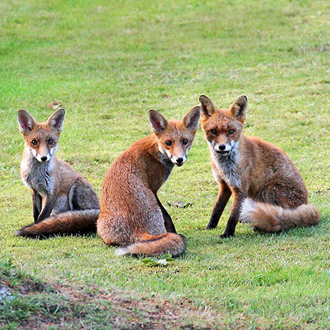
 |
 |
 |
 |
 |

|
 |
 |
 |
|
Red Foxes (Vulpes vulpes, male 6.5kg, female 5.5kg) generate diametrically opposed opinions within the British public, but everyone would probably agree that the species is a handsome, adaptable and highly effective survivor. One group sees this as a problem, the other as a point of merit. There are around 250,000 Foxes in the UK, with motor vehicles killing vastly more each year than hunting ever could, and for various reasons a higher proportion now live in urban settings. One reason is not that they have invaded our space, but that we have invaded theirs by constructing ever more houses in ever more locations. Another is that humans are appallingly wasteful in throwing away vast quantities of food, and fail to package the discards efficiently, while others feed Foxes almost A third reason for Foxes living in close proximity to people is that buildings, be they industrial or domestic, and gardens provide safe cover for breeding. This can come at a price, since Foxes like to have more than just one den, with the result that any and every shed is likely to have piles of earth removed from underneath to give the vixen the space she requires. It is never easy keeping Foxes out of a garden if they wish to enter - they can scale two-metre fences, dig their way under the vast majority of fences or, if that fails, bite their way through old fencing. One desperate difficulty with urban Foxes is sarcoptic mange, a highly contagious (though in the early stages treatable) disease which looks hideous and must feel a great deal worse, given that millions of mites can infect the body of an individual causing relentless irritation and chronic fur loss leading to death. Mange can wipe out populations, and affect new colonists for a number of years afterwards. Images © Jeremy Early. All rights reserved. In 2013 I published My Side of the Fence - the Natural History of a Surrey Garden. Details may be found, and orders placed, via this hyperlink My Side of the Fence. In November 2015 Surrey Wildlife Trust published the atlas Soldierflies, their allies and Conopidae of Surrey, jointly written by David Baldock and me. Details are on this web page: Atlas. |